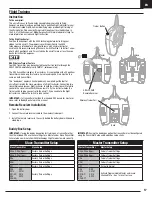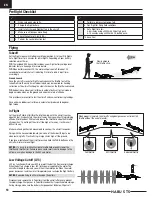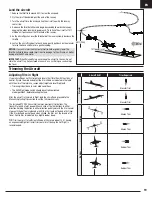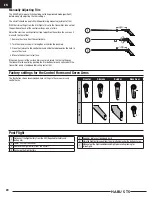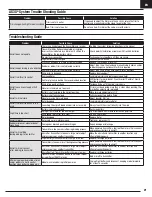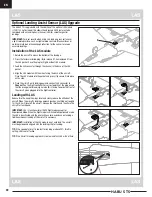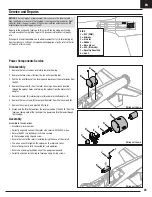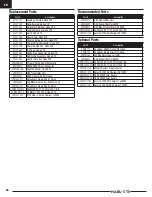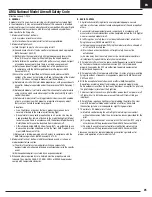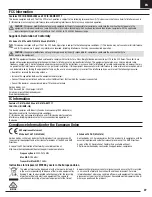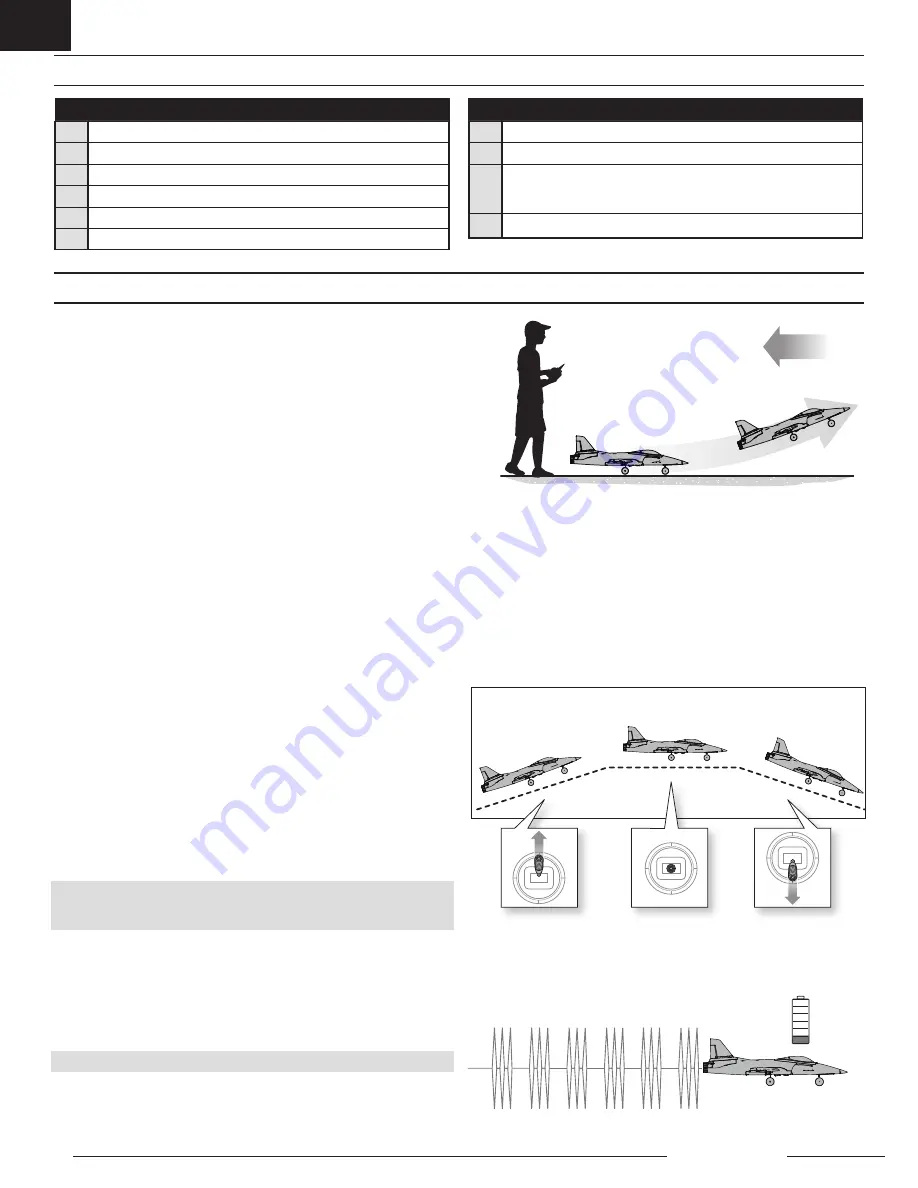
EN
HABU STS
18
Takeoff
Set the flight mode switch to Beginner Mode (position 0) for your first flights.
Set a flight timer for 5 minutes for initial flights. Depending on your battery
selection, adjust timer.
TIP:
The included DXS transmitter includes a new flight battery voltage level
indicator feature. See page 6 for more details.
TIP:
When battery reaches LVC, the motor will pulse on/off for about 30
seconds before motor shuts off indicating it is time to land. Adjust timer
accordingly.
Ground Launch
Once the aircraft is ready for flight, slowly advance the throttle to start the
takeoff roll into the wind. Small rudder inputs may be required for heading
correction as the aircraft will begin a slow climb out as the throttle is advanced.
TIP:
Rudder / nose wheel control throw is automatically set for taxi mode in
beginner mode when on the ground and under 6 meters of altitude.
This provides more control to taxi the aircraft and yaw control during landings.
Once airborne, rudder control throw is automatically reduced to beginner
flight mode.
Slowly advance
the throttle stick.
Wind
When properly trimmed, the aircraft’s wing design causes a climb at full
throttle without the use of elevator.
50% throttle
Full throttle
Reduced throttle
In Flight
Let the aircraft climb at full throttle, into the wind, until the aircraft reaches
about 50 feet. Gradually turn the aircraft away from you while still maintaining
altitude. Climb to about 200 feet and reduce the throttle to about half throttle
stick position. Try not to get the aircraft too high or far away. It will make it
difficult to see.
Make small and gentle stick movements to see how the aircraft responds.
Flying with the nose pointed toward you is one of the hardest things to do
when learning to fly. Practice flying in large circles high off the ground.
If you lose orientation of the aircraft, press and hold the PANIC button and the
aircraft will return to level flight.
NOTICE:
If a crash is imminent, activate throttle hold or quickly lower the
throttle and throttle trim. Failure to do so could result in extra damage to the
airframe, as well as damage to the ESC and motor.
Low Voltage Cutoff (LVC)
LVC is a function built into your ESC to protect the battery from over-discharge.
When the battery charge is low, LVC limits power supplied to the motor. The
aircraft will begin to slow and you will hear the motor pulse. When the motor
power decreases, land the aircraft immediately and recharge the flight battery.
NOTICE:
Repeated flying to LVC will damage the battery.
Disconnect and remove the Li-Po battery from the aircraft after use to prevent
trickle discharge. Charge your Li-Po battery to about half capacity before storage.
During storage, make sure the battery charge does not fall below 3V per cell.
Flying
Preflight Checklist
1. Find a safe open area to fly.
2. Charge the flight battery.
3. Install a fully charged flight battery in the aircraft.
4. Make sure all linkages move freely.
5. Check the Center of Gravity (CG).
6. Perform the control direction test
7. Perform a radio system range test.
8. Plan flight for flying field conditions.
9. Set a flight time for:
4-6 minutes using a 3000mAh 3S battery pack.
8-10 minutes using a 4000mAh 3S battery pack.
10. Have Fun!














